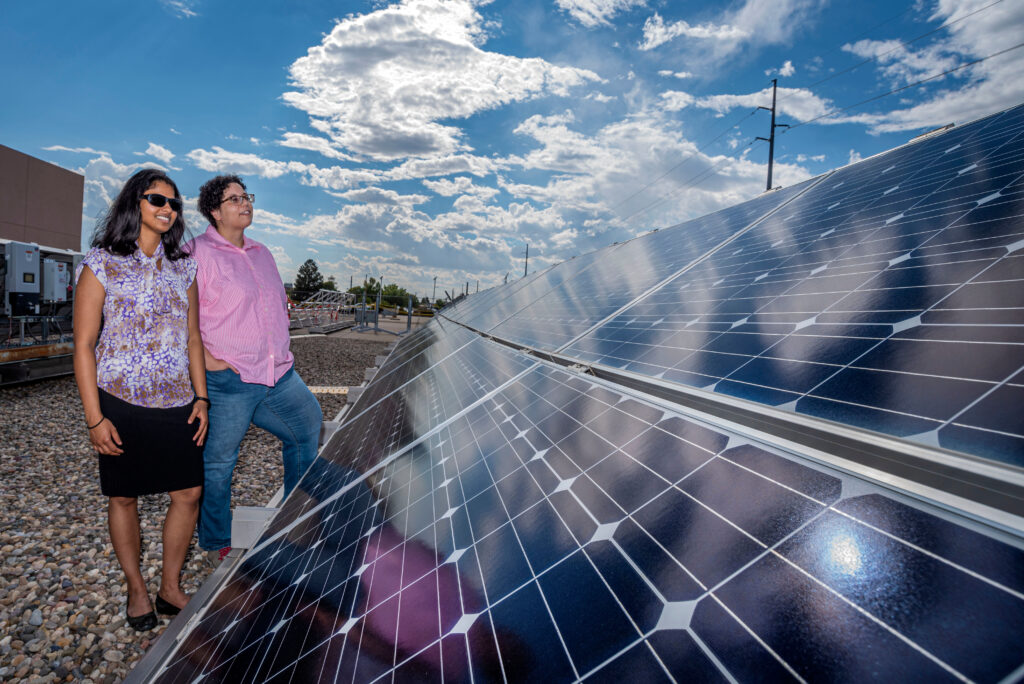Researchers in the USA have applied machine learning algorithms to real-world solar farm data to determine the impact of severe weather on energy generation.
The researchers from the US Department of Energy’s Sandia National Laboratories scoured maintenance tickets from more than 800 solar farms in 24 states and combined that information with electricity generation data and weather records to assess the effects of severe weather on the facilities.
Hurricanes, blizzards, hailstorms and wildfires all pose risks to solar farms both directly in the form of damage, and indirectly in the form of blocked sunlight and reduced electricity output. By identifying the factors that contribute to low performance, the research team hopes to increase the resilience of solar farms to extreme weather.
Thushara Gunda, senior researcher on the project, said, “Trying to understand how future climate conditions could impact our national energy infrastructure is exactly what we need to be doing if we want our renewable energy sector to be resilient under a changing climate. Right now, we’re focused on extreme weather events, but eventually we’ll extend into chronic exposure events like consistent extreme heat.”
The Sandia research team first used natural-language processing, a type of machine learning used by smart assistants, to analyze six years of solar maintenance records for key weather-related words.
“Our first step was to look at the maintenance records to decide which weather events we should even look at,” said Gunda. “The photovoltaic community talks about hail a lot, but the data in the maintenance records tells a different story.”
While hailstorms tend to be very costly, they did not appear in solar farm maintenance records, most likely because operators tend to document hail damage in the form of insurance claims, Gunda said. Instead, she found that hurricanes were mentioned in almost 15% of weather-related maintenance records, followed by the other weather terms, such as snow, storm, lightning and wind.
“Some hurricanes damage racking – the structure that holds up the panels – due to the high winds,” said Nicole Jackson, the lead author on the paper. “The other major issue we’ve seen from the maintenance records and talking with our industry partners is flooding blocking access to the site, which delays the process of turning the plant back on.”
Next, the researchers combined more than two years of real-world electricity production data from more than 100 solar farms in 16 states with historical weather data to assess the effects of severe weather on solar farms. They used statistics to find that snowstorms had the highest effect on electricity production, followed by hurricanes and a general group of other storms.
Then they used a machine learning algorithm to uncover the hidden factors that contributed to low performance from these severe weather events.
“Statistics gives you part of the picture, but machine learning was really helpful in clarifying the most important variables,” said Jackson, who primarily conducted statistical analysis and the machine learning portion of the project. “Is it where the site is located? Is it how old the site is? Is it how many maintenance tickets were submitted on the day of the weather event? We ended up with a suite of variables and machine learning was used to home in on the most important ones.”
She found that across the board, older solar farms were affected the most by severe weather. One possibility for this is that solar farms that had been in operation for more than five years had more wear-and-tear from being exposed to the elements longer, Jackson said.
Gunda agreed, adding, “This work highlights the importance of ongoing maintenance and further research to ensure photovoltaic plants continue to operate as intended.”
For snowstorms, which unexpectedly were the type of storm with the highest effect on electricity production, the next most important variables were low sunlight levels at the location due to cloud cover and the amount of snow, followed by several geographical features of the farm.
For hurricanes – principally hurricanes Florence and Michael – the amount of rainfall and the timing of the nearest hurricane had the next highest effect on production after age. Surprisingly low wind speeds were significant. This is likely because when high wind speeds are predicted, solar farms are preemptively shut down so that the employees can evacuate, leading to no production, Gunda said.
The research team is working to extend the project to study the effect of wildfires on solar farms. Because wildfires aren’t mentioned in maintenance logs, they were not able to study them for this paper. “Operators don’t stop to write a maintenance report when their solar farm is being threatened by a wildfire,” Gunda said. “This work highlights the reality of some of the data limitations we have to grapple with when studying extreme weather events.”
“The cool thing about this work is that we were able to develop a comprehensive approach of integrating and analyzing performance data, operations data and weather data,” Jackson said. “We’re extending the approach into wildfires to examine their performance impacts on solar energy generation in greater detail.”
The researchers are currently expanding this work to look at the effects of severe weather on the entire electrical grid, add in more production data, and answer even more questions to help the grid adapt to the changing climate and evolving technologies.
This research was supported by the US Department of Energy’s Solar Energy Technologies Office and was conducted in partnership with the department’s National Renewable Energy Laboratory. The results were published in the scientific journal, Applied Energy.



